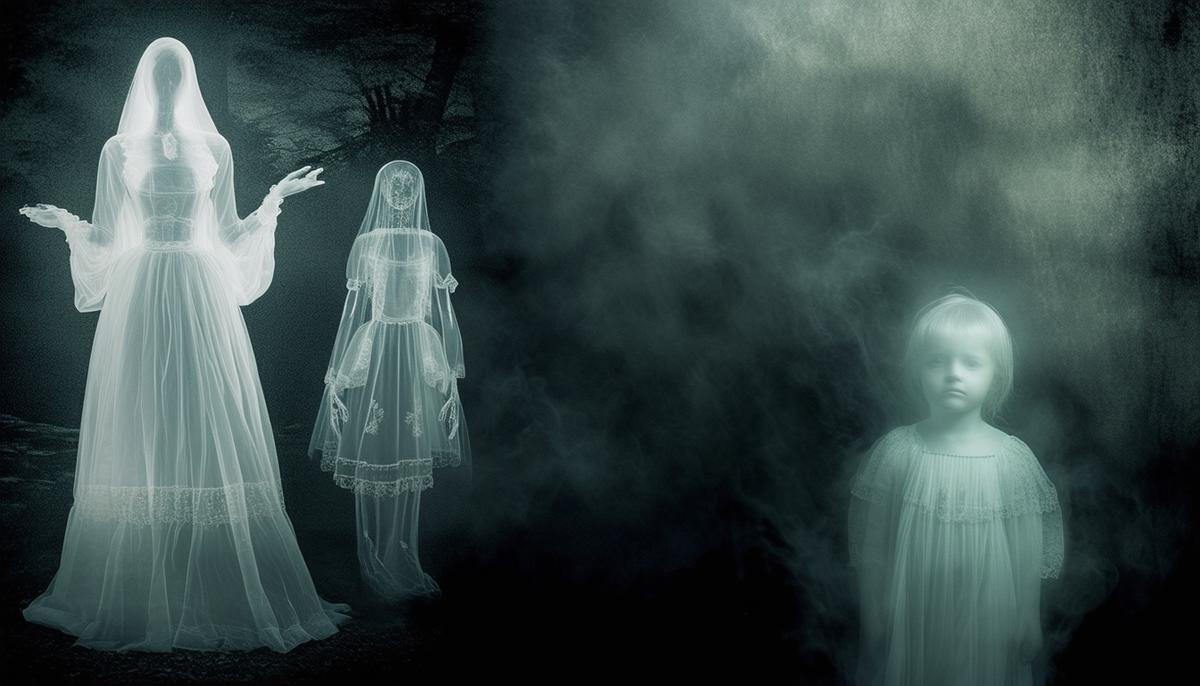Throughout history, tales of restless spirits and ghostly apparitions have captivated the human imagination. From tragic figures seeking solace to vengeful entities haunting their former abodes, these stories offer a glimpse into the mysteries that lie beyond our understanding.
1. Anne Boleyn
Anne Boleyn, the ill-fated second wife of King Henry VIII, has a ghost story that continues to haunt England centuries after her execution. After failing to produce a male heir, Anne faced the wrath of her husband and was beheaded in 1536 at the Tower of London. Her restless spirit is said to linger at the site of her death, marking one of the most chilling apparitions in British history.
Reports of Anne's ghost span multiple locations, including:
- Hever Castle, her childhood home
- Blickling Hall, her birthplace
- The Tower of London
- Salle Church
- Marwell Hall
Witnesses describe a "whitish, female figure" wandering the grounds, often seen carrying her severed head. One of the most unnerving encounters involved a guard at the Tower of London who fainted from fear after attempting to stab the specter with his bayonet.
Each sighting adds another layer to her sorrowful tale, forever tied to the English monarchy's brutal history.
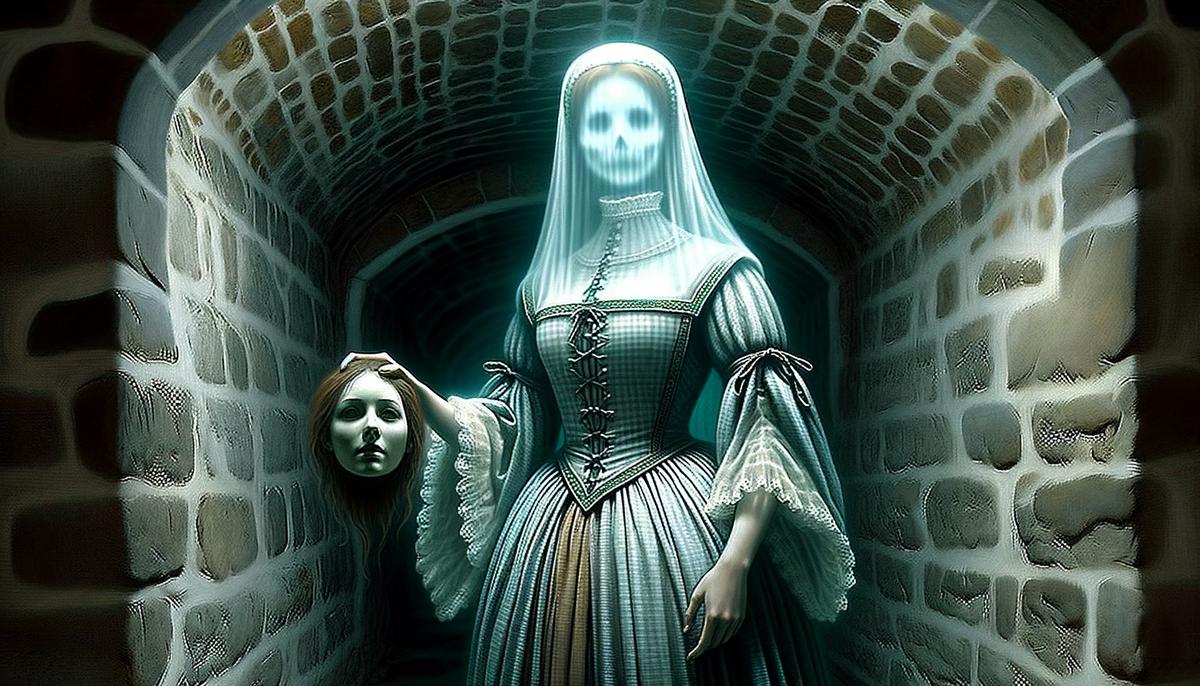
2. Bloody Mary
Bloody Mary is a chilling spectral entity said to appear in mirrors when summoned by speaking her name thrice in front of a dimly lit mirror. The origins of Bloody Mary are murky, with multiple stories attempting to explain her vengeful spirit.
Theories about Bloody Mary's identity include:
- A witch from the Salem trials
- A victim of a horrific murder
- Queen Mary I of England, who earned the moniker "Bloody Mary" due to her persecution of Protestants
The ritual of summoning Bloody Mary has become a staple of sleepovers and a rite of passage for thrill-seekers. Some accounts describe her as a silent figure, her mournful eyes peering back from the depths of the mirror. Others tell a more terrifying tale—where she screams, reaches out, or even inflicts physical harm on those daring enough to summon her.
Whether you consider Bloody Mary to be a tragic figure, a vengeful spirit, or merely a figment of imagination, her legend has persisted for years, captivating those seeking an otherworldly encounter.

3. Kuchisake-onna
From Japanese urban legends emerges Kuchisake-onna, or the Slit-Mouthed Woman. This eerie apparition has haunted the imaginations of children and adults alike for decades. The legend recounts a beautiful woman disfigured in a jealous rage, her mouth horrifically sliced from ear to ear. As a vengeful spirit, Kuchisake-onna now roams the streets, particularly targeting children.
Her presence is signaled by her unsettling disguise: a surgical mask concealing her ghastly mouth. If she crosses your path, she will stop you with a deceptively simple question: "Am I beautiful?" A question loaded with danger, regardless of your answer.
| Response | Consequence |
|---|---|
| "No" | Often leads to immediate demise |
| "Yes" | She reveals her disfigurement and asks again |
| "Average" | May confuse her long enough for escape |
Kuchisake-onna's legend resurfaced with alarming prominence in the late 1970s, causing widespread panic and leading children to travel in groups. While reported encounters have waned over the years, the Slit-Mouthed Woman's sinister legend remains an indelible part of Japan's cultural lore, cautioning us to be wary of beautiful strangers bearing hidden horrors.
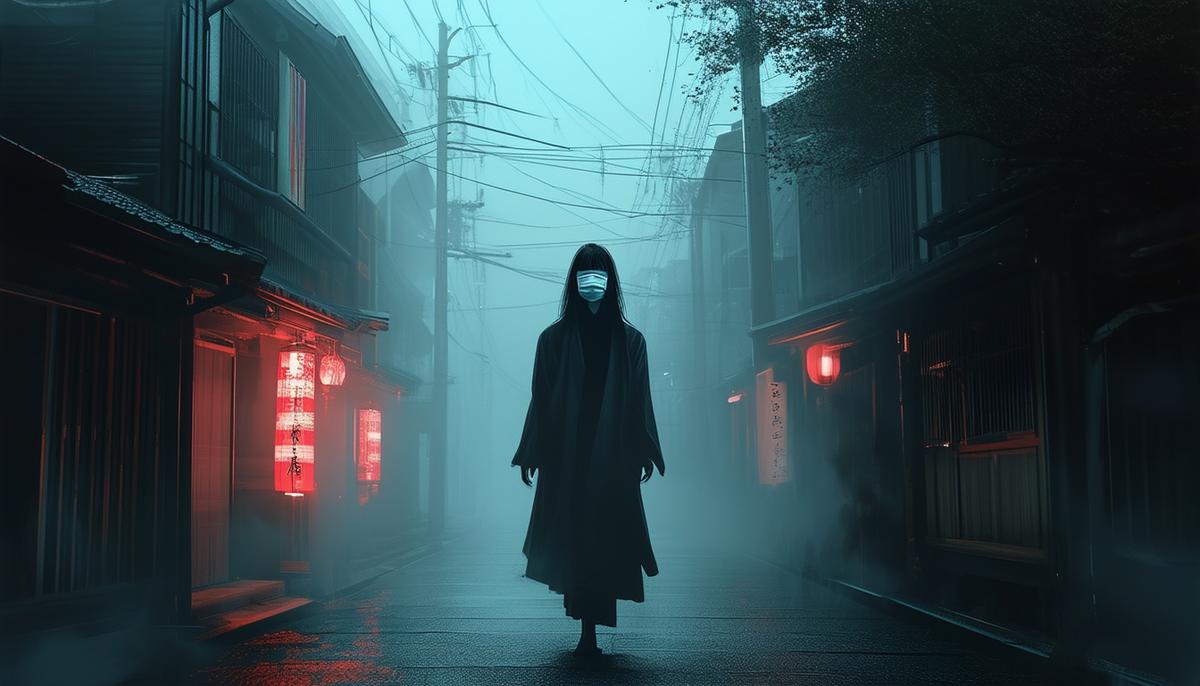
4. The Headless Nun
In French Fort Cove, Canada, the ghost of the Headless Nun roams endlessly in search of her severed head. Her story, dating back to the 1700s, has become a cornerstone of Canadian ghost lore. The Headless Nun, often referred to as Sister Marie Inconnue, was originally part of a group of noble French women sent to Canada to join convents.
Two competing accounts of her demise exist:
- She met her tragic end at the hands of a deranged fur trapper
- She was killed by treasure-seeking sailors
Regardless of the tale, the outcome remains the same: the nun's head was cruelly severed, leaving her spirit to wander in a desperate, eternal search to reclaim it.
Visitors to French Fort Cove have reported spine-chilling encounters with the spectral nun, describing a ghastly figure clutching her habit as she moves silently through the fog-laden woods. Some claim to hear mournful whispers on the wind or feel an inexplicable chill. Local legend holds that the Headless Nun is harmless to those who show her respect, but potentially vengeful towards those who mock her plight.
The cove has become a hotbed for paranormal enthusiasts and curious visitors hoping to catch a glimpse of the legendary specter. Guides often recount the numerous sightings and mysterious phenomena associated with her, from unexplained lights flickering among the trees to sudden drops in temperature.
Despite the passage of time, the legend of the Headless Nun endures, ensuring that Sister Marie Inconnue's search for her head remains one of Canada's most haunting and enduring ghost stories.
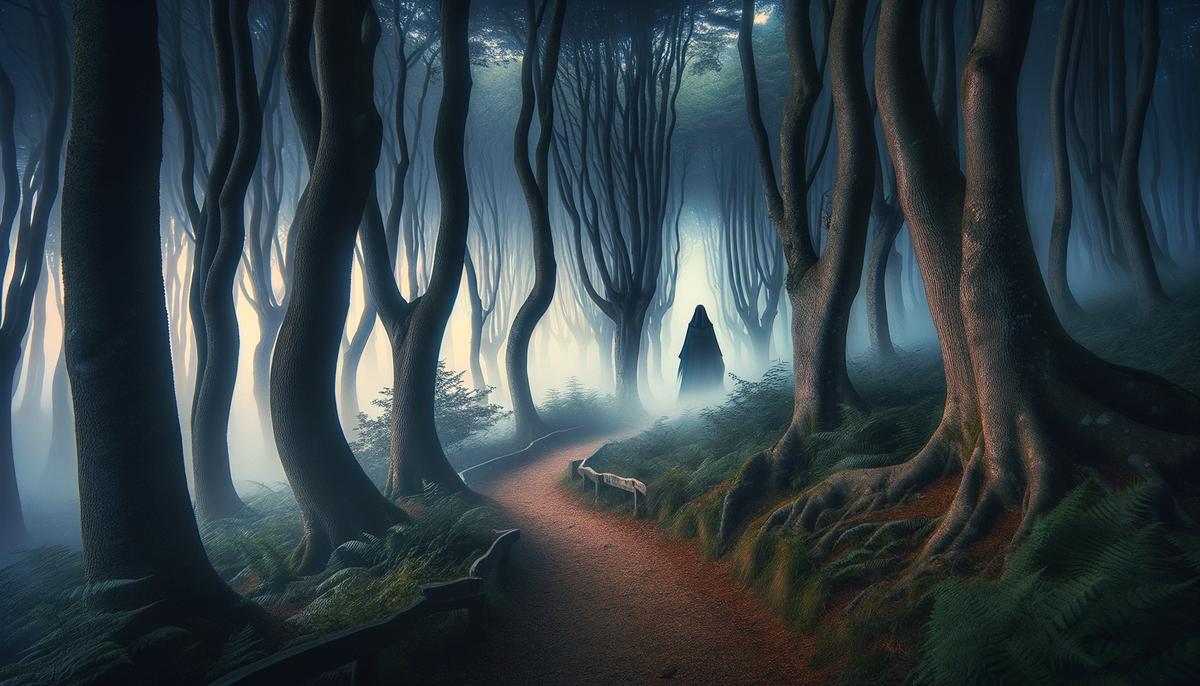
5. The White Lady
The spectral figure known as the White Lady has haunted the imaginations and locales of various cultures around the globe. Dressed in her flowing white gown, this ghostly apparition presents a visage of sorrow and tragedy. While her presence is universal, each region has its own unique legend explaining the ethereal White Lady.
Regional variations of the White Lady legend:
- Medieval England: Often associated with tales of despair and love gone awry. One popular tale tells of a heartbroken young woman who threw herself from a castle tower after learning of her lover's betrayal.
- Scotland: The ghost of a woman who, unable to bear the sorrow of losing her child, succumbed to a tragic end herself.
- Philippines: Haunts dark roads and highways, often associated with modern legends of car accidents. Drivers claim to see her reflective figure standing eerily still by the roadside or appearing suddenly in their rearview mirrors.
- Portugal: Said to haunt century-old mansions, with stories of a young bride who committed suicide on her wedding day after discovering her fiancé with another woman.
- United States: Often turns up in haunting tales of tragic brides or mothers in search of their lost children. A well-known story comes from Union Cemetery in Connecticut, where numerous witnesses have reported seeing the ghostly White Lady wandering the graveyard.
The White Lady's pervasive presence in ghost stories worldwide serves as a reminder that tales of love, loss, and sorrow are universal. Whether seen as a forewarning of death or a restless spirit unable to move on, the White Lady continues to evoke a mix of fear and empathy, standing as a testament to the themes of tragedy and unending quests for resolution that haunt us all.
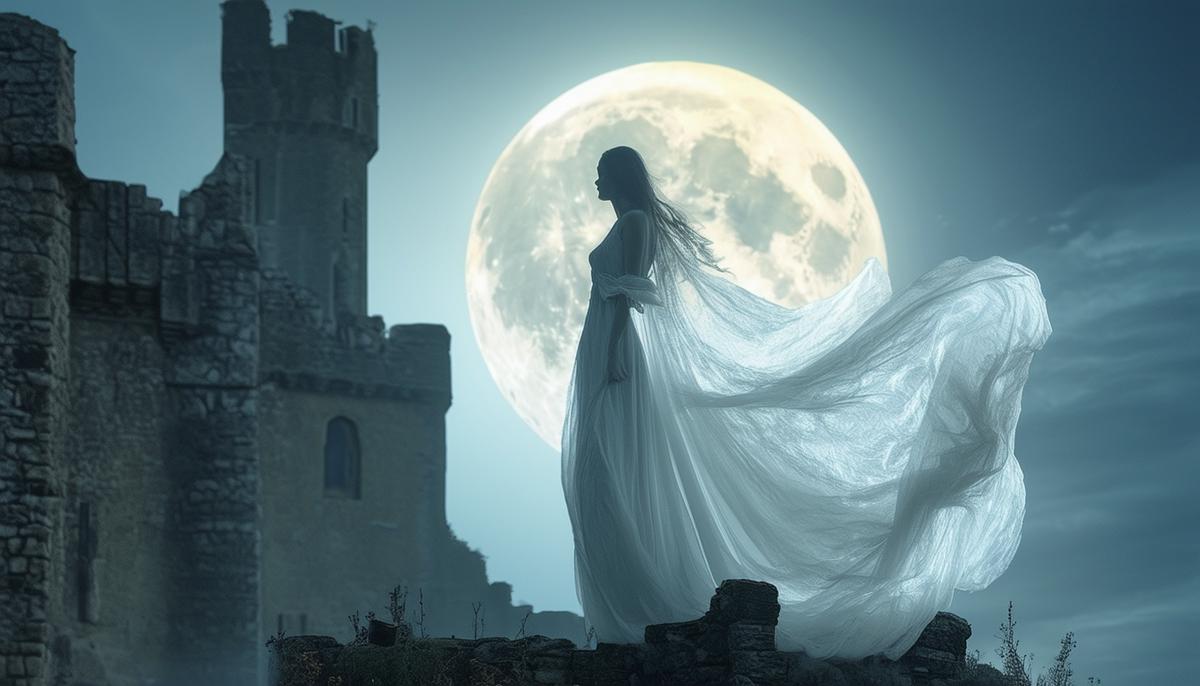
6. The Grey Lady
Dudley Castle in England is home to a spectral resident known as the Grey Lady, believed to be Dorothy Beaumont. Her tragic tale continues to fascinate visitors to this day.
Dorothy lived in the 17th century and was a resident of Dudley Castle. She gave birth to a stillborn daughter and died shortly after from illness. Unable to fulfill her final wish of being buried next to her husband and child, her restless spirit is said to roam the castle.
Visitors report seeing a woman in grey with a sad expression wandering the corridors and rooms. The most frequent sightings occur near the chapel and castle keep. Some describe feeling a chill or hearing muffled sobbing. On rare occasions, the scent of lavender – Dorothy's favorite flower – can be detected.
The Grey Lady's story speaks to themes of love and loss. Her presence draws many to Dudley Castle hoping to glimpse her ethereal form, making her a poignant symbol in paranormal folklore.
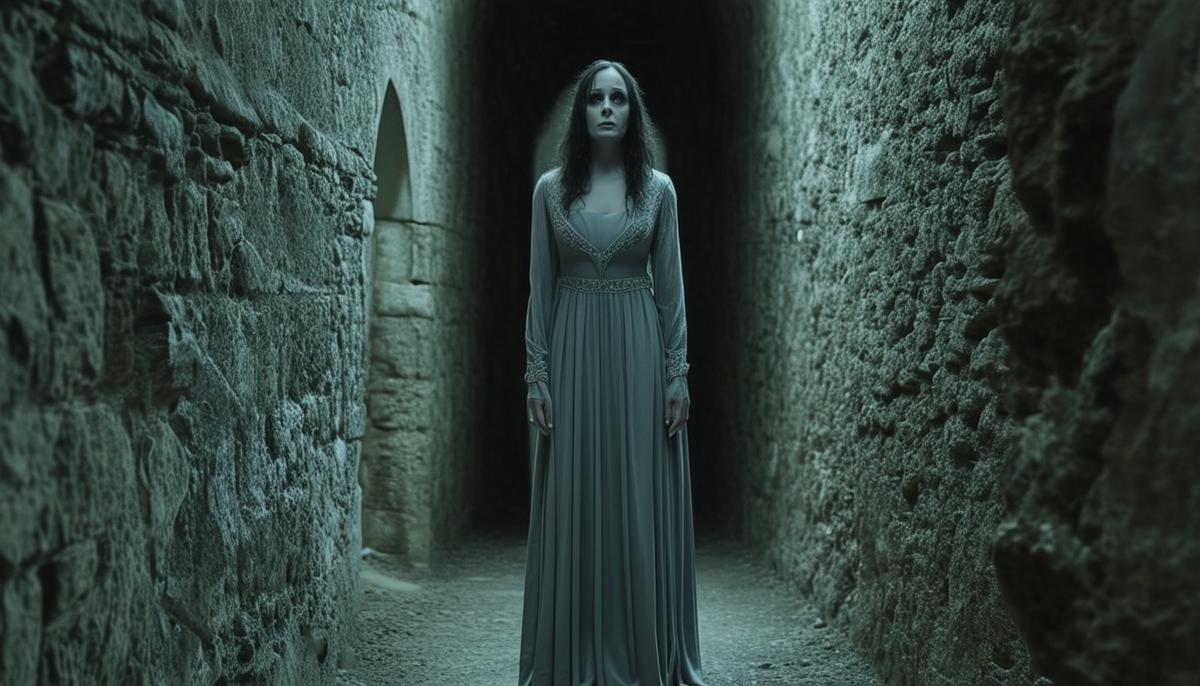
7. The Brown Lady of Raynham Hall
Raynham Hall in Norfolk, England, is renowned for its famous ghostly resident: the Brown Lady. Believed to be Lady Dorothy Walpole, she has haunted the manor since the 18th century.
Lady Dorothy, wife of Viscount Charles Townshend, lived a tragic life. Rumors of infidelity led to her imprisonment within Raynham Hall, where she died of smallpox in 1726. Her spirit, however, remained.
The Brown Lady, named for her brown brocade dress, was first recorded in 1835 when two guests saw her at the top of a staircase. Her empty eye sockets added to the chilling encounter.
"I saw the lady ghost… She was brown all over, as if she had been painted with a brown colour."1
In 1936, a Country Life magazine photographer captured the most famous ghost photograph ever taken. It shows a misty figure on Raynham Hall's grand staircase. Despite scrutiny, the photo remains unexplained.
Common Experiences:
- Drops in temperature
- Feelings of sadness
- Sightings of her gliding across hallways
- A sorrowful countenance
The Brown Lady's legend has inspired countless ghost hunters and paranormal investigators. Her story of betrayal and imprisonment continues to captivate those who explore Raynham Hall's haunted history.
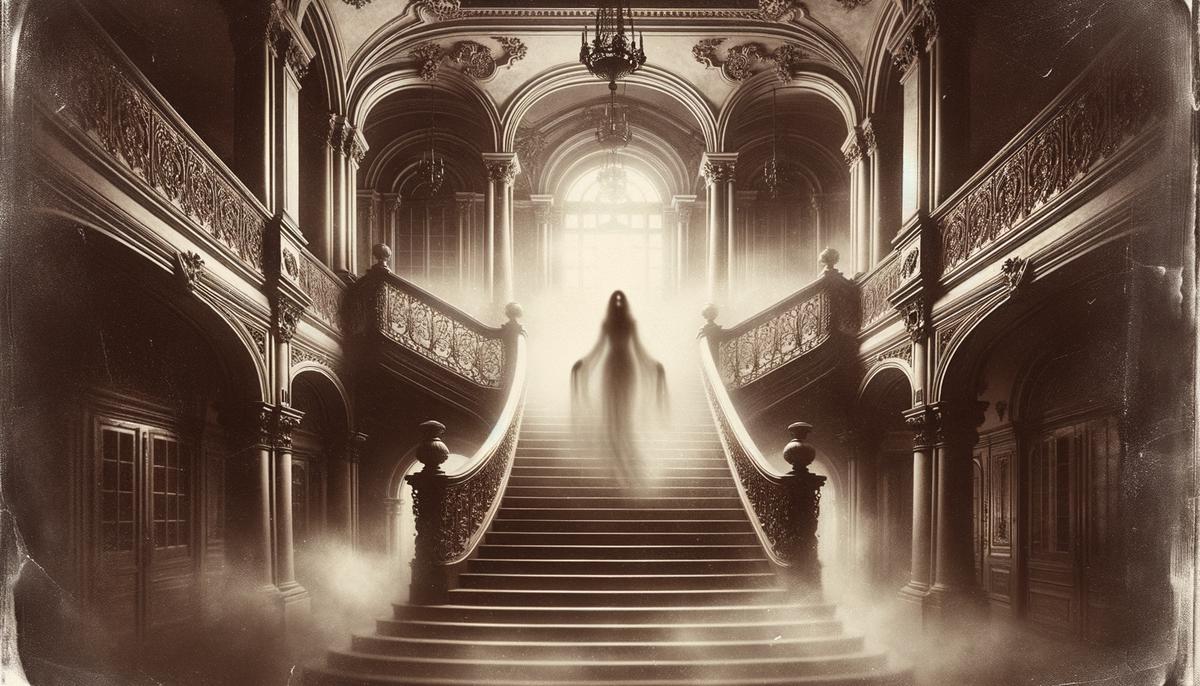
8. The Red Lady of Huntingdon College
Huntingdon College in Montgomery, Alabama, is home to the Red Lady, a ghostly figure with a sorrowful past.
The Red Lady was once Martha, a shy New York girl who reluctantly attended Huntingdon College to honor her grandmother's wishes. Martha had an intense love for the color red, decorating her dorm room entirely in crimson.
Despite her attempts to fit in, Martha struggled to make friends. Her isolation deepened, and her mental state deteriorated. One night, wrapped in her red blanket, Martha took her own life.
Since then, Martha's spirit, clad in red, has been seen wandering the dormitory halls. Students have awoken to find her standing in their doorways, her eyes filled with longing. Those who encounter the Red Lady often describe an overwhelming sense of sadness.
Martha's story serves as a reminder of the impact of isolation and the need for empathy. Her presence at Huntingdon College ensures her tale is not forgotten, a haunting symbol of unfulfilled potential and unrelenting solitude.
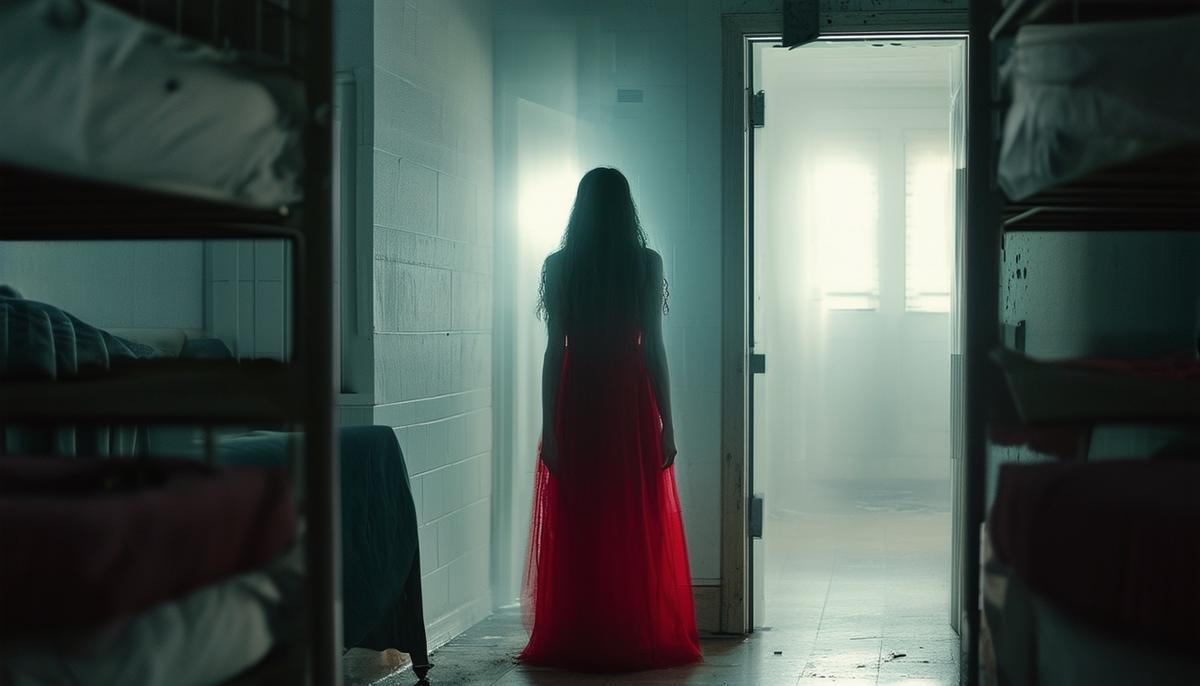
9. The Blue Lady
The Moss Beach Distillery Café in California is haunted by the Blue Lady, a ghost whose tale of forbidden love and tragedy has captivated visitors for decades.
Historical Context:
- Era: 1920s Prohibition
- Location: Popular speakeasy
- Protagonists: Beautiful woman in blue, café pianist
During this time, a beautiful woman in a blue gown fell in love with the establishment's pianist. Their affair was secret due to her marriage to another man.
One fateful night, the lovers were attacked during a beach stroll. The woman was killed, while her injured lover survived. Since then, her spirit has remained at the café.
Reported Paranormal Activity:
- Mysterious phone calls
- Phantom piano music
- Inexplicable cold spots
- Doors refusing to open
Visitors describe the Blue Lady as a beautiful yet sorrowful apparition in a luminescent blue dress. She appears briefly before vanishing, leaving behind a sense of melancholy.
The Blue Lady's story has made the Moss Beach Distillery Café a popular spot for paranormal enthusiasts. Her eternal search for her lost love serves as a haunting reminder of passion that transcends death, intertwining the café's history with a ghostly tale that continues to intrigue visitors.
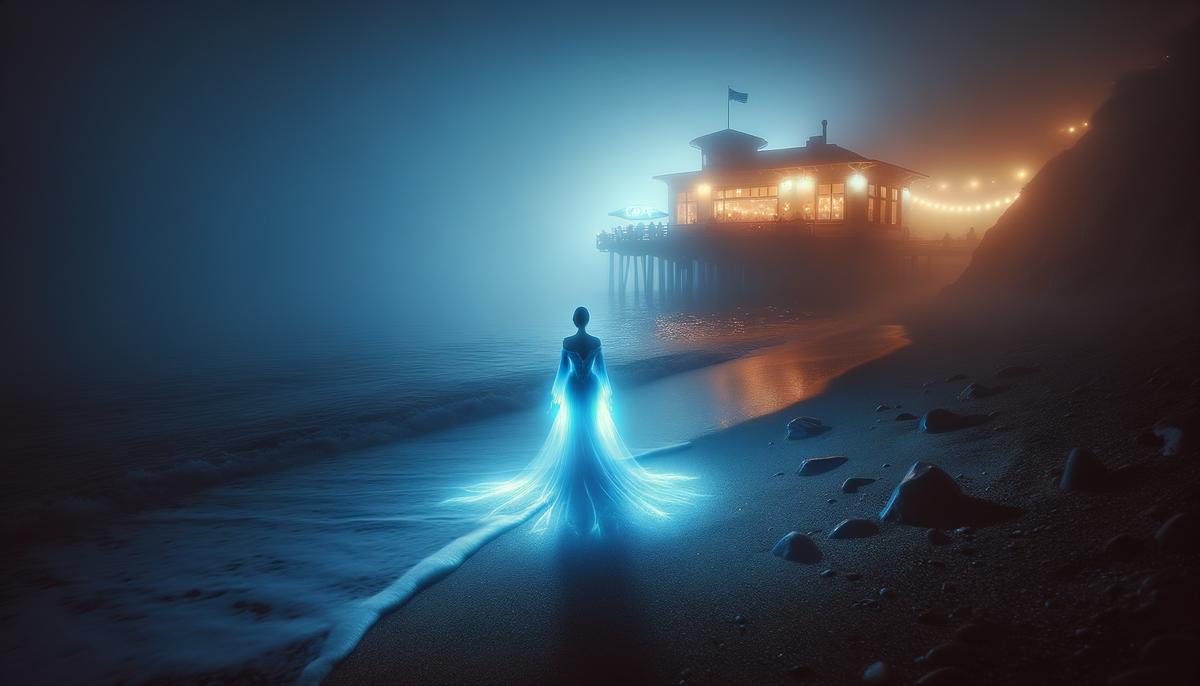
10. Screaming Jenny
In West Virginia, a chilling tale of tragedy unfolds annually, captivating locals and paranormal enthusiasts. The ghost of Screaming Jenny haunts the train tracks where she met her untimely end.
Jenny, a destitute woman, lived in a shack by the railroad tracks. One frigid winter night, as she huddled by the fire, her skirt caught flame. In agony and panic, Jenny fled towards the nearest train station, hoping to find help.
Blinded by pain and terror, Jenny didn't see the approaching train. The engineer, unaware of the fiery figure in the darkness, couldn't stop in time. Jenny's life ended tragically as the train struck her, her screams echoing into the night.
Each year on the anniversary of that fateful night, Jenny's ghost reportedly reappears. Witnesses describe seeing a figure engulfed in flames, tearing down the tracks with unearthly speed. Her agonized screams pierce the night, chilling those who hear them.
The phenomenon of Screaming Jenny has become a fixture of local folklore. Paranormal investigators and thrill-seekers gather at the site yearly, hoping to glimpse the fiery specter or record her cries. Despite skepticism, the legend persists, fueled by generations of eyewitness accounts.
Jenny's ghostly presence serves as a stark reminder of fate's cruelty. Her annual reappearance is both a terrifying ghost story and a tale of unfulfilled desperation. For those who venture near the tracks on the anniversary of her demise, Screaming Jenny's eternal screams cut through time, connecting the living with a sorrowful echo of a life cut short.

11. The Bell Witch
In 19th-century Tennessee, a haunting tale of spectral torment emerged that still grips the region today. The Bell Witch, believed to be the malevolent spirit of Kate Batts, became infamous for her relentless attacks on the Bell family, turning their peaceful plantation into a site of terror.
John Bell Sr., a prosperous farmer, moved his family to Adams, Tennessee. Soon after, eerie disturbances began plaguing their home. What started as innocuous scratching sounds and whispers escalated into a sinister assault.
Kate Batts, rumored to have had a bitter dispute with John Bell over land, was believed to have cursed the family before her death. Following her passing, the Bell household became a hotbed of paranormal activity. Unseen forces attacked the children, objects moved on their own, and family members were slapped and pinched by invisible hands.
The Bell Witch's Chilling Abilities:
- Power to speak and converse
- Invocation of Biblical verses with eerie precision
- Ability to fill rooms with her voice
- Taunting and terrorizing all within earshot
The haunting reached its peak with the death of John Bell Sr. The spirit allegedly poisoned him, eerily vocalizing her triumph as John lay dying. This event cemented the legend in American folklore.
Even President Andrew Jackson, intrigued by the tales, visited the Bell homestead. Legend has it that the battle-hardened general and his entourage were driven away by the unrelenting spirit.
Today, the Bell farm attracts both skeptics and believers. Visitors claim to hear disembodied voices, experience sudden temperature drops, and witness inexplicable object movements. The haunting remains a potent story, blending historical documentation with supernatural lore.
The Bell Witch saga reinforces the notion that some spirits hold a tenacious grip on the living world. Kate Batts' vengeance has transcended time, ensuring her legend remains a staple of American ghost stories—a chilling reminder of the power of unresolved rage.
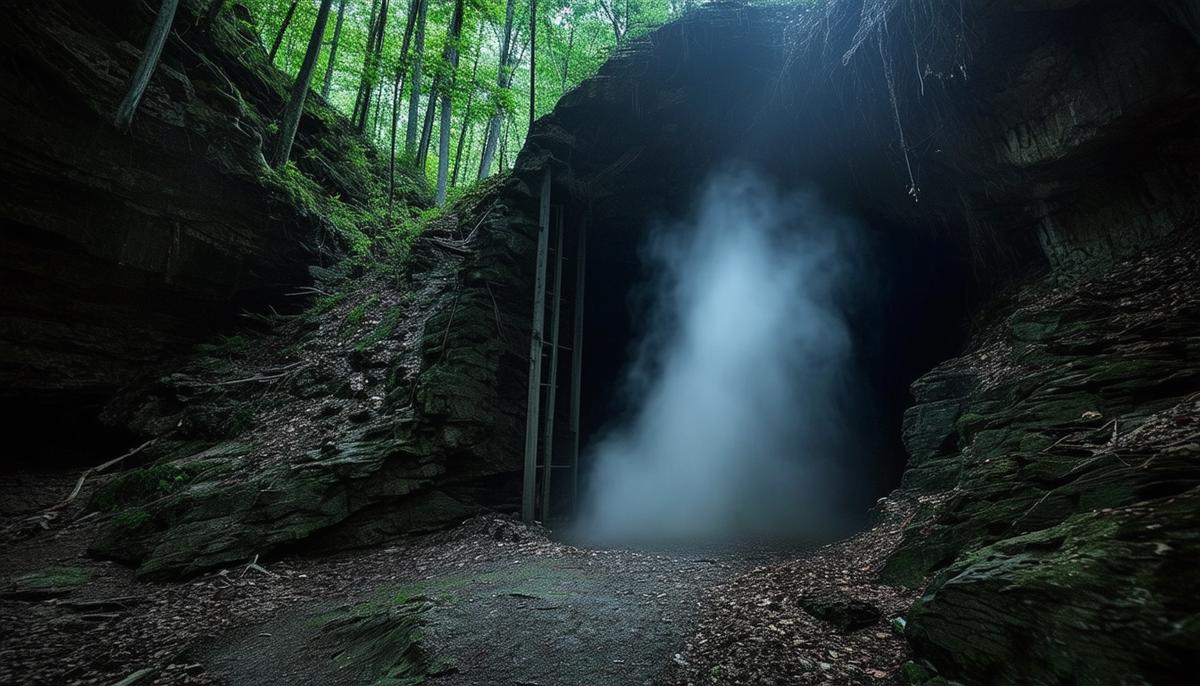
12. Dolley Madison
The White House holds secrets that defy logic and reason. Among its most enduring tales is that of Dolley Madison, the spirited First Lady whose presence still lingers, guarding the legacy she built.
Dolley, wife of President James Madison, revolutionized social norms in Washington, D.C. Her quick thinking during the War of 1812 saved precious artifacts, most notably George Washington's portrait, as the British set fire to the White House.
"Dolley Madison's ghost reportedly appeared, dressed in 19th-century attire, issuing a clear message to leave her garden untouched."
One persistent legend involves Dolley's protection of the White House Rose Garden. During Woodrow Wilson's presidency, his wife Edith planned to renovate the garden. As work began, Dolley's ghost reportedly appeared, dressed in 19th-century attire, issuing a clear message to leave her garden untouched. Workers halted, overwhelmed by an unexplained chill and sense of presence. The renovation was abandoned.
Dolley's spectral vigilance extends beyond the White House. The Cutts-Madison House, where she lived after her husband's presidency until her death in 1849, is also said to be haunted by the former First Lady. Her ghost is often seen in her favorite rocking chair on the porch, offering a comforting presence. Staff and visitors report the scent of lilacs—Dolley's favorite flower—filling the air inexplicably.
Within the Cutts-Madison House, witnesses describe rustling skirts and soft footsteps echoing through hallways. These occurrences are accompanied by a calm, welcoming aura, suggesting Dolley's spirit continues to oversee her cherished home.
Dolley Madison's ghostly appearances serve as a reminder of her profound impact. Whether safeguarding the Rose Garden or overseeing her former residence, her enduring spirit embodies her commitment to her nation and home. In the quiet moments of Washington, D.C., Dolley's presence offers a bridge to the past, ensuring the stories and beauty she protected will never be forgotten.
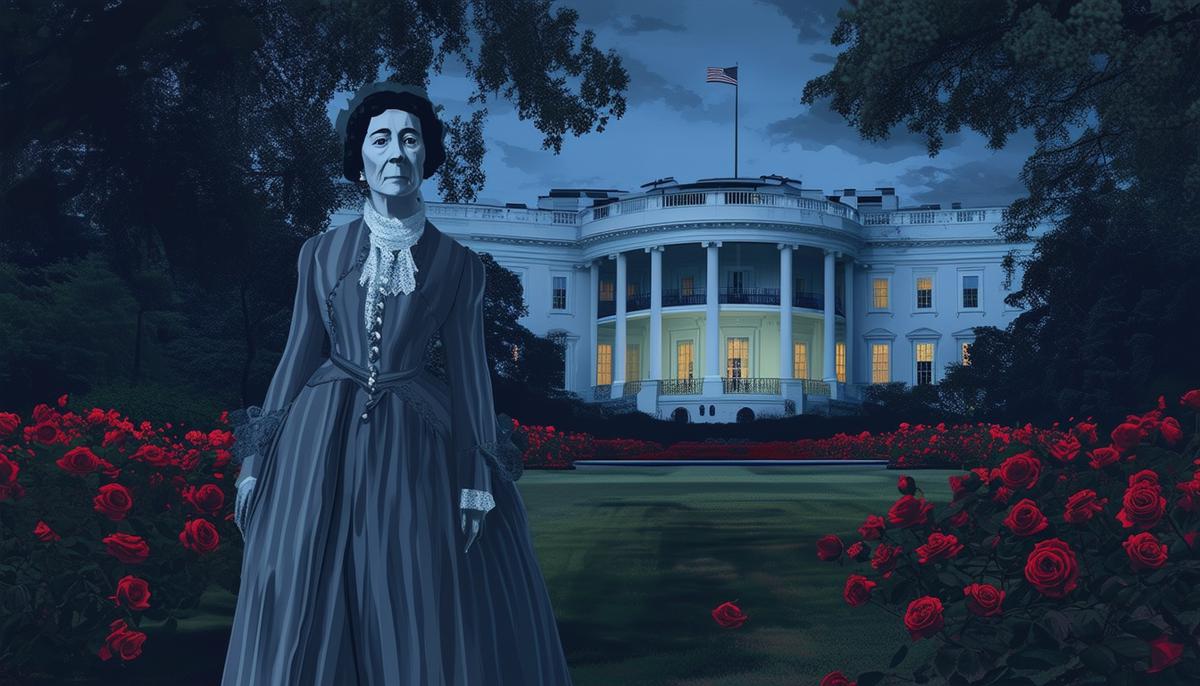
13. Theodosia Burr
Theodosia Burr Alston, daughter of infamous Vice President Aaron Burr, lived a life marked by both privilege and sorrow. Her mysterious disappearance in 1812 has spawned ghostly tales that continue to intrigue the curious and brave.
Known for her wit and intelligence, Theodosia married Joseph Alston, who became governor of South Carolina. Her life was marred by her father's political downfall and the death of her young son. In 1812, she boarded the schooner Patriot to reunite with her father in New York, but the ship vanished without a trace.1
Ghostly Sightings of Theodosia Burr:
- Georgetown dock
- Debordieu family summer retreat
- Old Oaks Plantation (now Brookgreen Gardens)
Witnesses describe a luminous figure in period clothing, often accompanied by an aura of melancholy. One eerie account tells of an apparition in a white gown waiting at Georgetown dock, as if yearning for her missing ship. Sailors and locals claim to have seen her forlorn figure by the water's edge, with faint whispers carried on the wind.
At Brookgreen Gardens, Theodosia's ghost allegedly wanders the grounds. Visitors report sightings of a woman in white, rustling sounds in empty hallways, and sudden chills. These occurrences draw both ghost hunters and history buffs to the storied plantation.
An intriguing legend involves a portrait supposedly washed ashore with an amnesiac woman—believed by some to be Theodosia herself. Though historically unconfirmed, this adds another layer to the enduring mystery of her fate.
Theodosia Burr's spectral tale resonates with themes of loss and unresolved destinies. Her story bridges past and present, reminding us that echoes of bygone lives linger. With each reported sighting, Theodosia's legacy as a spectral wanderer grows, cementing her place in American ghost lore and keeping her memory alive across centuries.
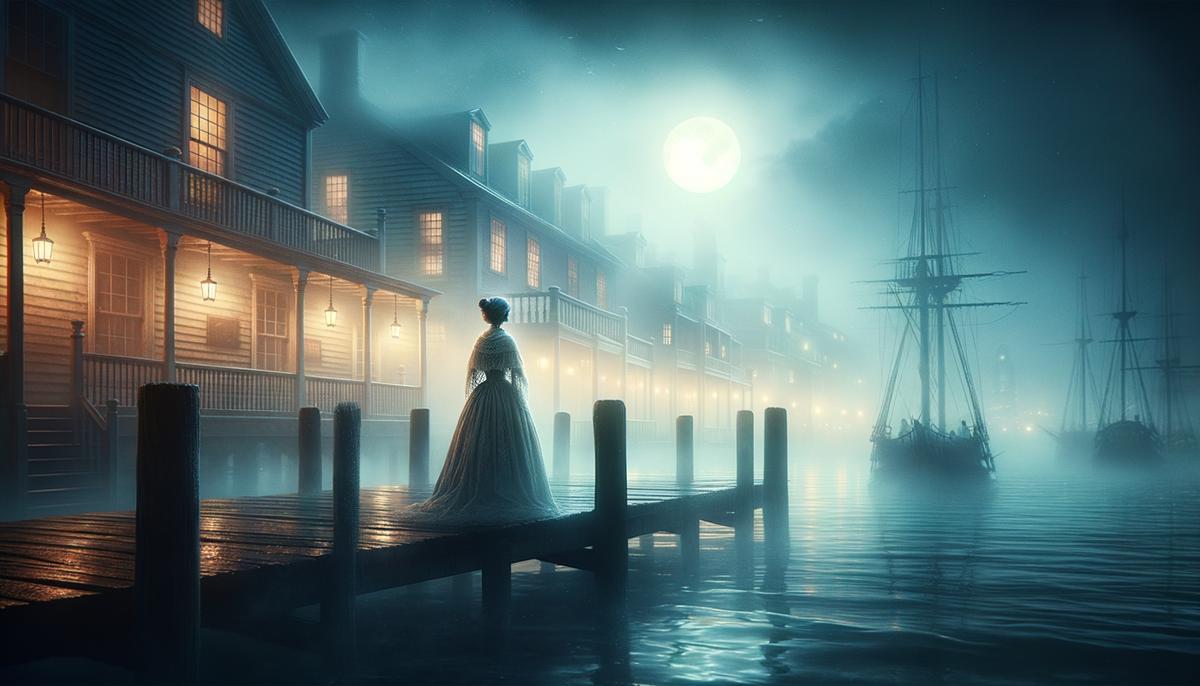
14. Madame Marie Delphine LaLaurie
In the French Quarter of New Orleans, a grand mansion at 1140 Royal Street hides a dark past. Here, Madame Marie Delphine LaLaurie committed horrific acts in the early 19th century, sparking tales of hauntings that persist today.
LaLaurie, once a prominent socialite known for hosting lavish parties, harbored a monstrous secret. In 1834, a fire exposed her cruelty towards the enslaved people who served her. Rescuers discovered a hidden chamber in the attic where LaLaurie had subjected her victims to brutal torture and experimentation.
The revelation shocked New Orleans, inciting public outrage. LaLaurie fled the city, vanishing into obscurity. Her actions, however, left an indelible mark on the mansion.
Paranormal Activity at 1140 Royal Street
- Sightings of LaLaurie's ghost, described as a woman with a cruel sneer, brandishing a whip
- Cold spots and sudden drafts
- Unsettling feeling of being watched
- Anguished cries and clinking chains
The mansion's eerie atmosphere and dark history have made it one of New Orleans' most infamous haunted locations. It serves as a grim reminder of human cruelty and its potential to leave a lasting imprint. For those brave enough to explore, the LaLaurie mansion offers a chilling encounter with one of America's most notorious figures.
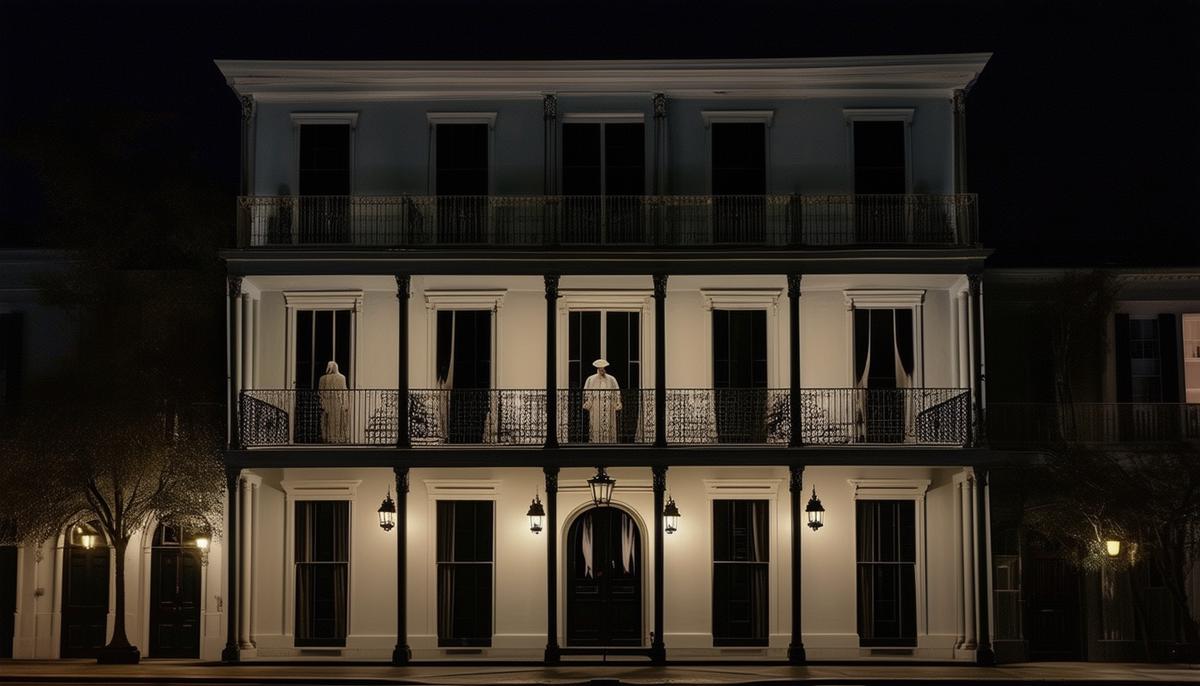
15. Olive Thomas
At New York City's historic New Amsterdam Theater, the ghost of Olive Thomas, a 1920s Ziegfeld Follies showgirl, is said to still grace the stage she once dominated in life.
Olive Thomas embodied Jazz Age glamour, but her life was cut tragically short in 1920 at age 25. Her mysterious death in Paris, reportedly from ingesting her husband's syphilis medication, left many questions unanswered.
Since then, Olive's spirit has become a fixture at the New Amsterdam Theater. Staff and visitors report encountering her in her iconic green beaded Follies costume, often holding a blue bottle—perhaps a ghostly reminder of her demise.
"Goodnight, Olive."
This traditional greeting, spoken by theater staff when closing, has become deeply rooted in the theater's culture. It's a nightly ritual acknowledging Olive's spectral presence.
Olive's Ghostly Encounters
- Playful yet eerie interactions, particularly with men
- Brief appearances before vanishing
- Unexplained whispers and cold spots
- Sightings of a luminous figure in green
Olive's story, both romantic and tragic, adds an intriguing dimension to the New Amsterdam Theater. Her spectral presence serves as a haunting reminder of her vibrant life and mysterious death, captivating ghost hunters, history enthusiasts, and theatergoers alike.
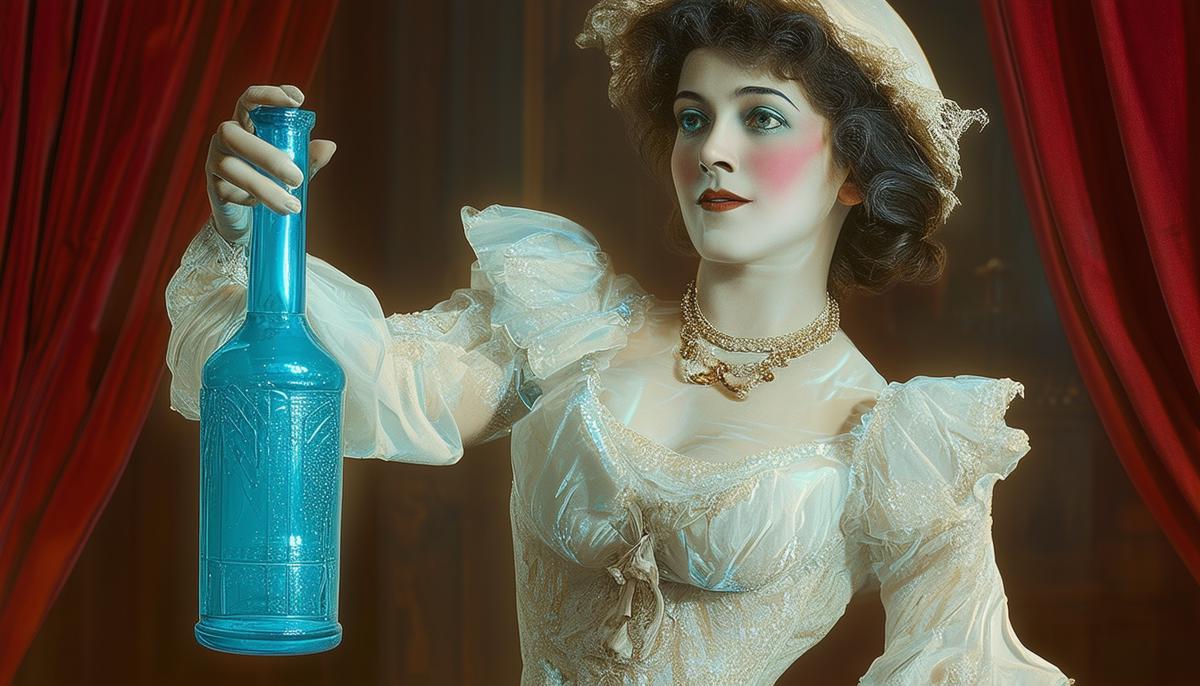
These haunting tales remind us that some stories transcend time and space, leaving an indelible mark on our collective consciousness. As we reflect on these accounts, we're left pondering the thin veil between our world and what lies beyond.

